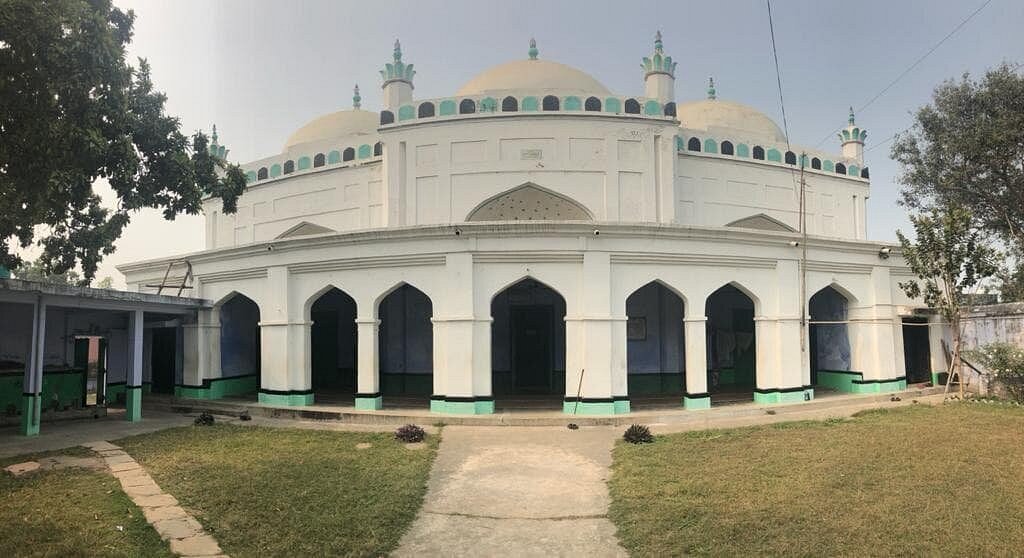Nestled on the banks of the Ganges in Rajmahal, Sahibganj district, the Akbari Masjid—also called the Jami Masjid of Rajmahal—stands as one of Jharkhand’s most significant Islamic architectural heritage sites. Commissioned during Mughal Emperor Akbar’s reign, this 16th-century mosque symbolizes the harmonious fusion of regional and imperial Muslim styles.
Though less celebrated than grand mosques elsewhere, it remains a vital link to the Mughal legacy in Eastern India, offering both historical resonance and spiritual beauty.
Table of Contents
Historical Background
Built circa 1592 under the patronage of Raja Man Singh, then governor of the region under Emperor Akbar, the mosque is a true product of the Akbari architectural vision.
It is believed that Emperor Akbar himself may have performed Namaz here, reflecting the Mughal policy of integrating regional centers into imperial religious life.
Imagine a time when Rajmahal served as a strategic riverside city, connecting trade across the Ganges while spiritual currents flowed through its prayer halls.
Architectural Features
Rooted in Akbar’s fusion design, the mosque incorporates:
Arched facades and domed prayer halls, marrying Persian and Hindu motifs
Red brick construction, typical of provincial Mughal structures
Multiple gateways and arched entrances in a cascading pattern.
Modest minarets or turret-like domes, less imposing than those in larger cities
A serene courtyard oriented toward the Ganges, providing views for sunrise prayers
The mosque is a distilled example of regional Mughal architecture—practical, spiritual, and harmonized with the riverside landscape.
Religious & Cultural Importance
Serves as the main congregational mosque for Rajmahal town and surrounding villages
Continues to host Jumu’ah prayers, Eid celebrations, and daily namaz
A place of continuous devotion—not only preserved as a monument but as a vibrant religious hub since Mughal times
Symbolizes cultural continuity, connecting modern Jharkhandis with their 16th-century heritage
Visiting Akbari Masjid
Location & Timing
Located in Mangalhat, Rajmahal, Sahibganj (PIN 816108)
Open daily, with Na‑Zohar, Asr, and Isha congregational prayers drawing the largest crowds
Access
By Road: ~10 km from Sahibganj town; autos and cycle-rickshaws provide easy access
By Rail: Near Rajmahal Railway Station; Sahibganj Junction is the nearest major railway hub
Etiquette
Remove footwear before entering
Modest attire encouraged; clean space regardless of faith
Be respectful during prayer times and avoid loud photography
Architectural Significance
While smaller than metropolitan mosques, Akbari Masjid holds unique value as:
A regional expression of Akbari architecture, blending cultural motifs instagram.com+7en.wikipedia.org+7tripadvisor.com+7
A spiritual structure adapted to riverside life, incorporating light, airflow, and Ganges reflection
A historical node linking Rajmahal to wider Mughal governance and religious geography
Local Stories & Folklore
Locals tell tales of:
Night prayers echoing through the courtyard, harmonized with the Ganges breeze
Descendants of original residents still attending Friday prayers—bridging centuries of continuous worship
Many pilgrims believe that special supplications during floods or dry spells have been answered here, lending the mosque a folk-spiritual aura
Broader Mughal Context
During Akbar’s reign, architecture was a key instrument of imperial unity. Akbari Masjid in Rajmahal is part of this mission—an outpost of Mughal secular and religious culture.
The mosque aligns closely with other Akbari-era structures such as Jama Masjid at Fatehpur Sikri, which share arched façades, charbagh-oriented courtyards, and a sense of grace amid utility.
Preservation & Tourism
Although not yet a protected ASI site, the mosque faces both:
Opportunities: To be spotlighted as part of Jharkhand’s cultural tourism, attracting heritage pilgrims
Challenges: Limited conservation and basic visitor amenities—an opportunity for responsible restoration and local economy engagement
Tour platforms have begun featuring it, and traveler reviews generally note its peaceful charm and riverside allure.
What to Combine It With
Ready for a spiritual and cultural tour of Rajmahal?
Shivgadi Dham: A cave Shiva temple ~8 km away
Moti Jharna Waterfall: A serene natural retreat
Maa Binduwasini Mandir: A hill temple overlooking the Ganges
Ganga Riverfront walks: Ideal at dawn and dusk for reflection and photography
Visiting Tips
Visit after sunrise or before sunset for best lighting and cool breeze
Check prayer timings to avoid crowding or disturbance
Bring water, sunscreen, and carry a small prayer mat if desired
Combine the trip with other nearby spiritual sites for a full-day itinerary
Conclusion
The Akbari Masjid of Rajmahal is more than just a relic; it is a living chronicle of vision, faith, and Mughal-era synthesis. From its elegant arches to its riverside prayers, it stands as a spiritual and cultural gem in east Jharkhand.
Whether you come seeking peace, history, or divine reflection by the Ganges, the mosque offers a timeless experience of grace, continuity, and spiritual heritage.











